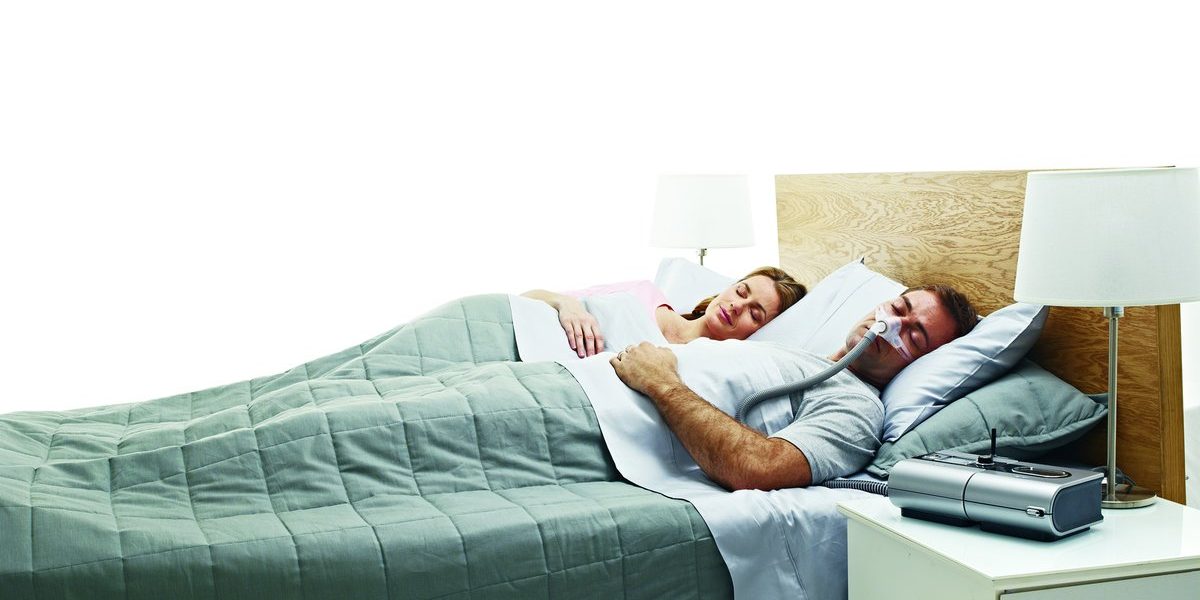Obstructive Sleep Apnea (OSA) is the most common type of sleep apnea and is characterized by repeated episodes of complete or partial obstructions to the upper airway during sleep, despite the effort to breathe, and is usually associated with a reduction in blood oxygen saturation. Fortunately, there are several treatments you can try to help with your sleep apnea. Treatments can include weight loss, positional sleeping, tonsillectomy for children, oral appliances, and positive airway pressure devices, such as CPAP and BiPAP machines.
If you have mild sleep apnea, your doctor may simply suggest raising the head of your bed to help prevent airway obstructions. Weight loss is usually the first suggestion to treat OSA, because even just a little weight loss can often cure or reduce the severity of OSA. Children are usually advised to have their tonsils and/or adenoids removed, because that is often the cause of the obstruction in pediatric cases. Some individuals with mild to moderate OSA may go the route of an oral appliance, which is basically a personalized mouth guard. However, the most common form of treatment for OSA is CPAP.
After being diagnosed with sleep apnea your doctor will likely prescribe you a CPAP machine as a form of treatment. What is a CPAP machine? CPAP is an abbreviation for Continuous Positive Airway Pressure. It is the most common nonsurgical treatment for sleep apnea and has been proven to be the most beneficial form of treatment in the majority of cases. This machine helps individuals with obstructive sleep apnea breathe more easily during sleep by helping to open up the airway. The CPAP machine gently increases the air pressure through your airways to prevent the airways from collapsing and causing obstructions while relaxed. It will often immediately decrease snoring and with use over time, it reduces daytime sleepiness, lead to a decrease in blood pressure during the day and night, and reduces the risk of heart problems for those with heart disease.

The device itself connects to tubing, which connects to a mask. The mask chosen for each individual depends on their comfort, their facial features, and whether or not they sleep with their mouth open.
BiPAP machines are another form of treatment that is similar to a CPAP machine. BiPAP stands for Bi-Level Positive Airway Pressure. BiPAP is generally used for individuals with more severe or complex sleep apnea or those who were unable to tolerate a CPAP machine. The difference is that CPAP generates the same constant pressure while inhaling (breathing in) and exhaling (breathing out) and BiPAP generates a higher pressure while inhaling and lower pressure while exhaling. No matter the device, the pressure settings are determined and prescribed by a physician. However, if approved by a provider, the pressures can be adjusted to accommodate individual comfort while providing effective treatment. The really cool thing about these newer devices is that therapy can be monitored and adjustments can be made remotely.
Some people used to complain about the size and noise of CPAP, but that is no longer a concern! Due to major improvements in CPAP development, the machines we supply are some of the quietest; so quiet you may not even hear it all. If anything is heard, it is generally described as white noise. The device itself is about the size of a radio or a loaf of bread and does not take up much space. You simply plug it in by your bed or your reclining chair, wherever you want to use it, and put the mask on. The device does also have a water chamber to supply heated humidification, if desired. Many individuals opt to use this to prevent dry mouth. However, it is important to use distilled water in the water chamber to avoid any mineral build up in the chamber.
It is also important to keep the equipment clean. Daily cleaning of the tube and mask is recommended. It is quick and simple to do, just run some warm soapy water through the tubing and wipe down the mask. Then rinse and hang over something like a shower current to dry and go about your day. This prevents any unwanted build up in the equipment and helps maintain the supplies. You should also clean out your water chamber frequently. There are also cleaning devices that can be used in conjunction with regular cleaning to help sanitize the device and supplies. Many people with PAP devices do purchase these cleaning devices for ease of mind and convenience purposes.
–Page Maryyanek and Laura Pratt
*This content is not intended to be a substitute for professional medical advice, diagnosis, or treatment. Always seek the advice of your physician or other qualified health provider with any questions you may have regarding a medical condition.

